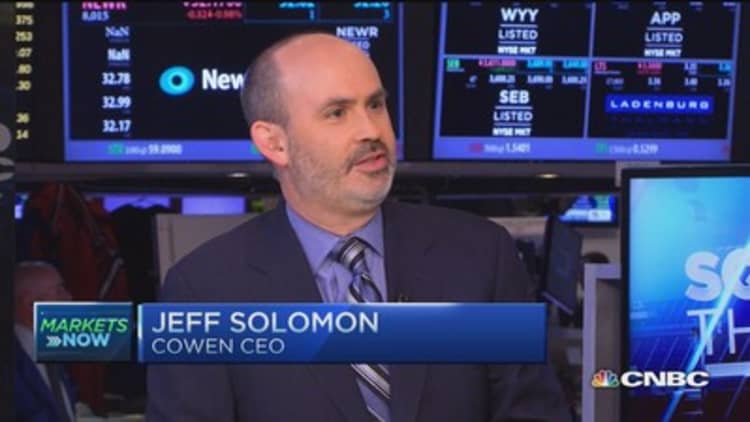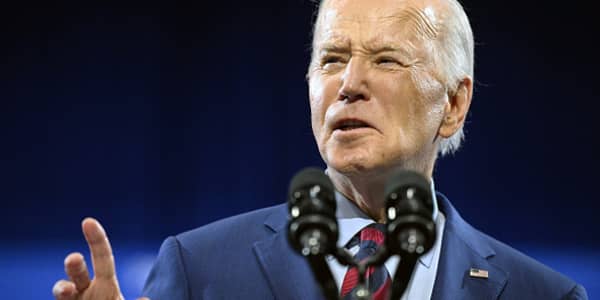
Wall Street is slowly coming to a grips with an economy that offers not breakout growth but more of the same mediocrity that could keep interest rates on hold until the end of the year.
Citigroup economists said Friday they don't expect the Federal Reserve to lift its key policy rate from near zero before the December meeting. The forecast coincides with growing pessimism in the futures market, which only a few months ago had expected tightening to happen in June at the latest but now believes there is virtually zero chance that will happen.
Instead, fed funds futures peg chances of a September increase at 30 percent with a 50 percent chance in October. December indicates more certainty, with a 63 percent probability.
The sharp change comes amid a sputtering economy that grew just 0.2 percent in the first quarter, according to a preliminary estimate this week from the Bureau of Economic Analysis.
"A June move remains possible, but now more improbable after the weak GDP report for the first quarter," Citi economist Dana Peterson and others said in a note to clients. Wednesday's Fed Open Market Committee statement, which removed any calendar targets for action, "supports our conjecture that the conditions for lift-off likely will not coalesce until later this year—likely December."
Also this week, Bank of America Merrill Lynch sounded what is likely to become an increasingly cautious tone among Wall Street economists. The firm slashed its second-quarter GDP expectation from 3.5 percent to 2.5 percent and sliced its full-year projection from 2.9 percent to 2.4 percent.
Read MoreConsumers holding on to their wallets for dear life
Not so long ago, the Street was certain the U.S. would grow at a 3 percent pace or better this year. Now, not so much.
In the BofA analysis, global economist Ethan Harris and others took aim at the plethora of factors offered up to explain the Q1 weakness: inclement weather, the West Coast port strike and the stronger dollar, to name the most common.
"Inclement weather and the shutdown at West Coast docks may have contributed to some of the weakness in 1Q GDP," the firm wrote. "However, neither of these factors explain the drop in investment, suggesting a more cautious outlook for capital spending.
"Harsh weather may have disrupted shipments, but that doesn't explain why forward-looking orders were weak, falling for five months by the time the unusually cold weather hit in February. Besides, orders and shipments held up during last year's polar vortex."
It wasn't just GDP that BofA cut: The economists also halved their projections for capital spending, or capex, from 8 percent to 4 percent. Capex is a critical metric in hopes for a robust economy at a time when companies have spent trillions in boosting share prices through dividend issuance and buybacks of their own stock that could have been committed to more organic growth. Indeed, investors have shrugged at years of lackluster economic growth, pushing up the stock market as long as the Fed was a willing partner with loose monetary policy.
Put it all together though, and BofA draws much the same conclusion as Citi: A rate hike even in September "will be difficult," and December "becomes a real possibility." (Goldman Sachs tiptoed into the fray Friday, cutting its Q2 estimate to 2.9 percent just a day after expressing optimism that the quarter would register a 3.0.)
"It is hard to see the Fed hiking in June even if we get blowout payroll numbers in April and May, although in that case the odds would be higher than they appear today," the BoA team said.
Read MoreWall Street's mystery: Where's the growth?
The facts on the ground regarding U.S. growth leave the Street in something of a grasping-at-straws-mode to find reasons for economic optimism, which, despite the mounting obstacles for growth, remains fairly widespread.
Thomas Lee, the managing partner at Fundstrat Global Advisors and a former top strategist at JPMorgan Chase, pointed out Friday in his daily earnings analysis that the first three months of 2015 were the "best in 10 quarters (and really in a decade)" in terms of company earnings beats against estimates.
That's true inasmuch as 70 percent of companies have exceeded profit expectations, good for a 7.10 percentage point beat, according to Lee. The flip side, of course, is that it amounts to all of a 0.55 percent annualized gain in profits, which were weighed down heavily by energy earnings that fell 64.1 percent. according to S&P Capital IQ.
Moreover, expectations through the year are not good and deteriorating rapidly: The second quarter is projected to show an earnings loss of 3.8 percent, worse than the 1.76 percent decline projected as of March 1, and the third-quarter is projected to show a 0.28 percent drop , against a 1.52 percent gain estimated on March 1 (and a 15.7 percent increase in October 2014).
It's also worth noting that while bottom-line beats have been strong, just 45 percent of nearly 300 companies on the that have reported so far beat sales expectations.
To be sure, there can be some solace to be taken in earnings numbers. Analysts typically undershoot their targets to set up yet another quarter where corporate America can brag about topping expectations.
Read MoreThis is why the Fed might not raise rates in 2015
For the economy, though, that's not the case.
Economists have been far too optimistic about growth. In the first quarter, they shaved their GDP projections from 3 percent all the way down to 1 percent by the time Wednesday's data release came around, and even that wasn't enough.
When the final 0.2 percent number came around, the Atlanta Fed's GDPNow tracker, which projected a 0.1 percent gain, was in a small group that came close to the actual number.
Be warned, then: The same tracker now puts second-quarter growth at an underwhelming 0.8 percent—and falling.






